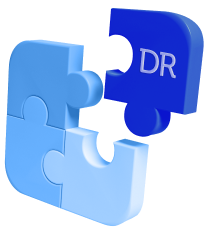Billing Performance KPIs: Is Your Billing Platform Substandard or Supercharged?
Billing performance is vital in managing revenue streams and promoting business growth, but not all billing platforms perform the same. Below are the questions you and your team should be asking (and getting the answers to) about your entire billing infrastructure to assess and valuate its performance.
Edwin Ryan Poquiz
Reading time: 6 minutes
Billing Performance Expectations Then and Now
Behind every thriving business with product and/or service offerings is a billing infrastructure that is managing payment processing tasks. Due to technological advancements, more complex business models, and ever-changing customer demands, the expectations on billing platforms have evolved significantly from handling basic invoicing to managing a more comprehensive end-to-end billing and revenue management processes. So yeah, there’s a lot more on their plates now.
The once simple, siloed billing platforms have gotten social and are now often friends with other strategic business systems such as accounting, CRM (customer relationship management), ERP (enterprise resource planning), compliance, and others. Altogether they work to drive revenue growth, operational efficiency, and customer satisfaction. I guess that makes them more like work buddies instead of friends friends.
Those are the expectations on billing platforms, at least. While a lot of them are on the top of their game, some, unfortunately, have not taken hints from the market. Some of them think being labeled a “legacy-something” is cool. Some of them bite off more than they can chew. To be fair, it’s not entirely their bad. Sometimes, they just keep receiving the wrong information (or too much information) from other business systems.
So whether you think your billing platform, or your entire billing infrastructure is a high-performing one or not, it would only do you good to (re)assess it occasionally. Just ask yourself the five main questions below and try to get the answers to them. Each question will be explored so you and your team know what exactly you should be asking or what answers you’re trying to receive.
Is My Billing Platform Agile and Scalable?
Pricing and Payment Options
Your customers love convenience and having options, right? So you listened to them like a good business would and offered them different pricing models and payment options. Maybe you started with just a couple of options and it’s working out for now. Say… perpetual licenses and a flat-fee subscription option. Most billing platforms can do this easily (up to a certain scale), but considering the adoption rate* of usage-based pricing, you will most likely (if you haven’t already) consider offering additional, more complex pricing models soon if you intend to stay competitive. Will your billing platform be able to adapt when you’re ready?
* “…we predict that by the end of this year (2023), 61% of the general SaaS index will have adopted some form of usage-based pricing, with another 21% planning on testing UBP in the future.” – OpenView
Foreign Market and Tax Regions
But what about your foreign markets or global operations? Is your billing platform able to handle multiple currencies? Does it support automated or native tax modules for every tax region where you do business today and in the future? How about applying a few independent taxes to a single invoice? Both your customers and business partners from far far away lands would appreciate it.
Integrations
A modern billing platform should be, as I mentioned earlier, friendly to other business systems, and be a part of an interconnected hub. An Application Programming Interface (API) acts as a bridge that facilitates data exchange and collaboration among different business systems.
With that said, does your billing platform offer comprehensive APIs? What about those legacy systems? Does it talk to them? Are the integrations robust and seamless? Are there any data synchronization issues? Does it automate your own business rules?
Multi-Channel Sales
Are your customers consuming your product/service via your website? Maybe you have an app as well, or a physical store. Or maybe the sensors in the IoT devices that they subscribed to are sending some usage metering data your way. What if they REALLY love your brand so they consume your stuff on all the different channels mentioned above? Your billing infrastructure better be able to handle that complexity.
Does it have real-time data access? Is it able to receive and process a variety of data formats and protocols?
Is It Secure and Compliant?
Security
It’s a no-brainer, but every stakeholder of your business should feel secure, right? We don’t want any unauthorized access to sensitive and personal data. Does your billing platform feature Two Factor Authentication, Single Sign-On (SSO), or other secure login options? Does it adhere to any encryption standards such as the FIPS 120? Are they GDPR (General Data Protection Regulation) compliant?
Compliance
This part would require a few acronyms. Keep reading, though. It’s short but also important.
On top of the security ones above, does your billing provider undergo any regular audits? Is it compliant to global accounting standards such as PCI-DSS, PA-DSS, IFRS 15, and ASC 606? Is it SOC 1 & 2 compliant? Are their audits available for download and review?
Does It Report Back Quality Info and Analytics?
Modern billing infrastructures are now expected to provide insights to help businesses make informed strategic decisions related to pricing models, new revenue opportunities, customer satisfaction, product/service optimization, etc.
Your billing platform should allow you to generate, display, and share reports according to your selected metrics. Are the reports customizable? Is it able to generate a report on your revenue that you can share with investors and lenders? Does the data come in real-time?
Besides the usual data on successful or failed transactions, can it also provide insights on payment trends? How about usage metering from your software or IoT devices? Does it help you understand customer behavior and churn patterns so that you can intervene at the right time to upsell or retain? Can you easily analyze business performance metrics such as ARPU (average revenue per user), CLV (customer lifetime value), MRR (monthly recurring revenue) with the reports that your billing infrastructure generates?
How Is It Handling the Increasing Volume and Complexity?
So, your business is growing, and the transactions are flowing in like crazy. You have more customers, more products and services, more sales channels, more partners to split revenues with, more pricing models… more everything! You used to manage one- off sales, then you transformed parts of your business into subscriptions or even usage or outcome-based models, and then, suddenly, customized contracts become a thing. Geez, how do you handle all that complexity of increased data volume and variety…
Is your billing platform delivering all the applicable points mentioned so far at scale or is it under stress? Are you starting to deal with billing disputes with customers and/or business partners?
Does It Help Optimize Our Revenue Generation?
This… THIS is the big one, right? The bottom line. Even if your entire billing infrastructure is solid (on paper), if it’s not contributing to the bottom line, then it’s really worth investigating and evaluating its performance.
A few extra features you can investigate regarding revenue generation might include how it’s performing on data validation, fraud prevention, dunning and revenue recovery. It should also be sophisticated enough to bill customers only for products, features, or consumption rates that they are entitled to.
Is it contributing to the company’s overall financial stability? Are your customers and business partners happy? Are the business insights that it provides valuable and actionable? Are all manual tasks related to billing eliminated? Does your IT team no longer need to patch up errors here and there?
Conclusion
The performance billing platforms out there are adapting to the changing business landscape. The outstanding ones are the ones that are ahead of the game and are future-proof, ready to take in whatever the future of transactions may throw at them. They are proactively developing and optimizing features that could manage a wide range of integrations, pricing models, sales channels. They also support global operations and are on top of any changes.
Remember the bunch of compliance-related acronyms I threw in up there? Just make sure that your billing platform adheres to industry and global standards and regulations so you can stay out of trouble. They should be able to provide you with their certifications and audit reports upon request if they are not already readily available on their website.
The huge differentiator between an okay billing infrastructure and an outstanding one is its ability to report back meaningful and actionable information and analytics that contributes to the bottom line.
So, cool! So far, so good, right? Everything is a “check” so far, but here’s the thing — Can it still do all of the above at scale?
Sign up for the Data for Subscriptions newsletter to receive info on the latest industry trends, podcast episodes with industry experts, and exclusive insights.
Challenges of Billing Optimization in a Usage-Based Model
Enterprises with usage or consumption-based business models face significant challenges when it...
Discover Usage Engine Private Edition 4: Agility in the Cloud
DigitalRoute software has been deployed by hundreds of companies across industries over the last...
Solving Billing Challenges from Start to Finish
In this blog post, we touch on the... err... touchpoints of billing and monetization, revealing...






